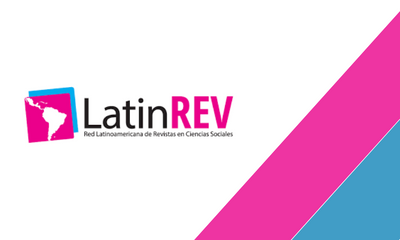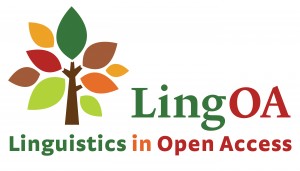Exploratory study about subordinate and compound bilingualism, language problems and emotional disorders.
DOI:
https://doi.org/10.32870/vel.vi20.185Keywords:
Bilingualism, Lexicon density, DepressionAbstract
Given the impact that bilingualism has on the psychological, neurological, educational and social development of the child, it is a thematic area that needs to be studied. From this approach, the purpose of this quantitative and qualitative study is to analyze the following research question: Can bilingualism cause problems learning in the mother tongue and emotional disorders in childhood? To that end, we focus on subordinate bilingualism, understood as the consolidated development of the mother tongue and the incomplete development of the second language, and compound bilingualism, that is, the development of two mixed and dependent linguistic systems, with bidirectional interference. Epshtein (cited by Vygotsky, 1935, 2000) states that these two types of bilingualism imply that the speaker experiences an inhibition and confusion of the connections between ideas and, therefore, a cognitive conflict. In addition, according to this author, subordinate and compound bilingualism can cause learning and language problems, and psychological disorders. Our results denoted a negative impact of subordinate and compound bilingualism, on the lexical density scale and on emotional disorders.
Downloads
Metrics
References
Abdelilah-Bauer, B. (2007) El desafío del bilingüismo. Madrid: Morata.
Alexopoulou, A. (2006) Los criterios descriptivos y etiológicos en la clasificación de
los errores del hablante no nativo: una nueva perspectiva. Revista Porta
Linguarum, 17-35. Granada: Universidad de Granada.
_____________. (2010) Errores intralinguales e interlinguales en la interlengua
escrita de aprendientes griegos de E/LE. Civil, P. & F. Crémoux (2010)
(Coord.): Actas del XVI Congreso de la Asociación Internacional de
Hispanistas, 1-10. Madrid: Iberoamericana.
Altarriba, J. & R.R. Heredia (2008) An Introduction to Bilingualism. Nueva York:
Lawrence Erlbaum Associates.
American Psychiatric Association (2014) DSM-5, Manual Diagnóstico y Estadístico
de los Trastornos Mentales. Madrid: Editorial Médica Panamericana.
__________________________. (2005) DSM-IV-TR, Manual Diagnóstico y
Estadístico de los Trastornos Mentales, texto revisado. Barcelona: Masson.
Ardila, A. (2012) Ventajas y desventajas del bilingüismo. Forma y Función,
, 2: 99-114. Bogotá: Universidad de Colombia.
Austin, J.L. (1970). Quand dire, c’est faire. París : Editions du Seuil.
Ávila, R. (1991) Densidad léxica y adquisición del vocabulario: Niños y adultos.
El español de América. Actas del III Congreso Internacional de El Español de
América, Valladolid.
Baker, C. & W.E. Wright (2017) Foundations of Bilingual Education and Bilingualism.
Nueva York: Multilingual Matters Ltd.
Balbino, A. (2007) La interlingua. Madrid: Arco Libros.
Bassetti, B. & V. Cook. (2011). Relating language and cognition: The second language user. En Cook, V. & B. Bassetti (Eds.) Language and Bilingual Cognition. Nueva York: Taylor & Francis Group,pp. 143-190.
Bialystok, E. (2009). Bilingualism: The good, the bad, and the indifferent.
Bilingualism: Language and Cognition, 12: 3-11.
_____________. (2001). Bilingualism in Development. Cambridge: Cambridge
University Press.
Cook, V. & B. Bassetti (2011) (Eds.) Language and Bilingual Cognition. Nueva York:
Taylor & Francis Group.
De Groot, A. (2011) Language and Cognition in Bilinguals and Multilinguals. Nueva
York: Taylor & Francis Group.
De Houwer, A. (1999) Two or more languages in early childhood: some general
points and practical recommendations. En ERIC Clearinghouse on
Languages and Linguistics: 1-4,http://www.cal.org/ericcll/digest/earlychild.html.
Deprez, C. (1994). Les enfants bilingues: Langues et familles. París: Didier.
Durand, V.M. & D.H. Barlow (2007) Psicopatología. México: Editorial Thomson.
Erikson, E. (1963). Youth: Change and Challenge. Nueva York: Basic Books.
Galisson, R. & D. Coste (1976) Dictionnaire de didactique des langues. París:
Hachette.
Grice, P. (1989) Studies in the Way of Words. Harvard: Harvard University Press.
Grosjean, F. (2010) Bilingual: Life and Reality. Harvard: Harvard University Press.
__________. (2008) Studying Bilinguals. Nueva York: Oxford University Press.
__________. (2004) Studying Bilinguals: Methodological and Conceptual Issues.
En Bhatia, T.K & W.C. Ritchie (Eds.): The Handbook of Bilingualism. EU: Malden, 32-64.
___________. (1982) Life with Two Languages: An Introduction to Bilingualism.
Harvard: Harvard University Press, Cambridge Massachusetts.
Hagège, C. (1996) L’enfant aux deux langues. París: Editions Jabob.
Hamers, J. & M. Blanc (2000) Bilinguality and Bilingualism. Cambridge:
Cambridge University Press
Hansegard, N.E. (1968). Tvasprakighet eller halvsprakighet? (¿Bilingüismo o
semilingüismo?). Stockholm: Aldus/Bonniers.
Hermanto, N., Moreno, S. & E. Bialystok (2012) Linguistic and metalinguistic
Outcomes of intense inmersion education: How bilingual? International
Journal of Bilingual Education and Bilingualism, 15 (2): 131-45.
Hernández, R., Fernández, C. & Baptista, P. (2010). Metodología de la Investigación. 5ª. Ed. Bogotá: McGraw-Hill.
Jung, C.G. (2007) Dos escritos sobre Psicología analítica. Obra completa, 7. Madrid: Editorial Trotta.
Kerlinger, F. (1975) Investigación del comportamiento. México: Editorial
Interamericana.
Koppitz, E.M. (1964) El Dibujo de la Figura humana en los niños. Buenos Aires:
Editorial Guadalupe.
Kovacs, M. (1992). Children’s Depression Inventory CDI Manual. Nueva York: Multi-
Health Systems.
Kovacs, M. & A.T. Beck (1977). An empirical approach toward a definition of
Childhood depression. En J.G. Schulterbrandt. Depression in childhood:
diagnosis, treament and conceptual models. Nueva York: Raven Press.
Kroll, J.F. & A.M.B. de Groot (eds) (2005) Handbook of Bilingualism. Psycholinguistic
Approaches. Oxford: Oxford University Press.
Lambert, W.E. (1974). Culture and language as factors in learning and education. En F., Aboud y R.D., Meade (Eds) Cultural Factors in Learning. Bellinghaum: Western Washington State College.
Lambert, W.E. & G.R., Tucker (1972). The Bilingual Education of Children: The St. Lambert Experiment. Rowley, M.A.: Newbury House.
Lightbown, P. & N. Spada (2013) How Languages are Learned. Oxford: Oxford University Press.
Machover, K. (1963) Dibujo de la Figura Humana. En Anderson y Anderson:
Técnicas proyectivas del diagnóstico psicológico. Madrid: Rialp.
Moradi, H. (2014) An Investigation through different Types of Bilinguals and
Bilingualism. International Journal of Humanities & Social Science Studies.
I, II: 107-112.
Paradis, J; Soto-Corominas, A; Vitoroilis, I; Al Janaideh, R; Chen, X; Gottardo, A;
Jenkins, J. & K. Goorgiades (2022) The Role of Socioemotional Wellbeing
Difficulties and Adversity in the L2 Acquisition of First Generation Refugee
Children. Bilingualism: Language and Cognition. Cambridge: Cambridge
University Press.
Paradis, M. (2004) A Neurolinguistic Theory of Bilingualism. Amsterdam: John
Benjamins Publishing Company.
_________. (1987) Bilinguisme. En Rondal, J.A y J.P, Thibaut (Comp.): Problèmes
de Psycholinguistique (pp. 422-89). Bruxelas: Pierre Mardaga, Editeur.
_________. (1981). Neurolinguistic organization of a bilingual’s two languages. En Copeland, J. (Ed.) The Seventh LACUS Forum. Columbia, SC: Hornbeam Press.
Piaget, J. (1997) La representación del mundo en el niño. Madrid: Morata.
Pick, S. & A.L., López (1984) Cómo investigar en ciencias sociales. México: Trillas.
Rojas, E. (2006) Adiós, depresión. Madrid: Editorial Temas de hoy.
Sánchez de Gallardo, M. & L. Pírela de Farías (2012) Estudio psicométrico de la
prueba Figura Humana. Revista de Estudios Interdisciplinarios en
Ciencias Sociales, 14 (2): 210-22. Maracaibo: Universidad Rafael Belloso Chacín.
Serra, M.; E. Serrat; R. Solé; A. Bel & M. Aparici (2000) La adquisición del lenguaje.
Barcelona: Ariel Psicología.
Siguan, M. (Coord.) (1996) La enseñanza precoz de una segunda lengua en la
escuela. Madrid: Editorial Horsoni.
Siguan, M. (2001) Bilingüismo y lenguas en contacto. Madrid: Alianza Ensayo.
Silva-Corvalán, C. (2013) Bilingual Language Acquisition: Spanish and English in the
First Six Years. California: University of Southern California.
Soutullo Esperón, C. (2005) Depresión y enfermedad bipolar en niños y
adolescentes. Navarra: Editorial Universidad de Navarra.
Timoneda, C. & F. Pérez (1996) Anales españoles de pediatría, 45, 5.
Van Patten, B. & A. Benati (2010) Key Terms in Second Language Acquisition.
Nueva York: Continuum.
Vila, I. (1996) Educación bilingüe, motivación y actitudes. En Siguan, M. (Coord.):
La enseñanza precoz de una segunda lengua en la escuela (pp.171-80).
Madrid: Editorial Horsoni.
Vygotsky, L.S. (1935, 2000) Sobre el plurilingüismo en la edad infantil (pp. 341-48).
En Obras escogidas, Madrid: Visor.
___________. (1982) Pensamiento y Lenguaje. En Obras escogidas II (p. 80).
Moscú: Editorial Pedagógica; España: Editorial Visor.
Weinreich, U. (1953) Language in contact. Findings and problems. Nueva York:
Publications of the linguistic Circle of New York 1. (Segunda Edición en 1968.
The Hague, Mouton).

Downloads
Published
Versions
- 2024-08-30 (2)
- 2022-06-01 (1)












